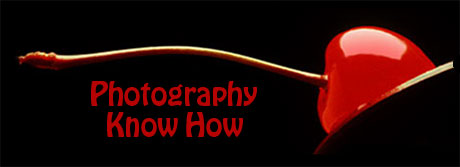Using the shutter priority mode on a digital camera lets you set the shutter speed and the camera adjusts the aperture to maintain correct exposure.
The shutter controls the amount of time that light is allowed to enter the lens and reach the image sensor, or the film. Along with the aperture setting, the shutter speed controls exposure.
The other function of the shutter speed is to control motion. You would use the shutter priority setting when motion control is an important factor in a photo.
The shutter speed is the main control you have to capture motion in a photo. Anything that moves during exposure can potentially cause the final image to be blurred.
If you want a moving object to be rendered very sharply in your photo, you would need to select a fast shutter speed. And if you want to show the blurring effect you’d select a slow shutter speed.
Controlling Motion
Controlling motion in still photography calls for a few choices to be made, and in this section we’ll look mainly at the technical choices that need to be considered.
These technical factors are such things as camera movement, and how focal length, subject speed, direction of motion and distance can all affect your choice of which shutter speed you need to control motion.
Camera Movement
Camera movement happens whenever the camera is moved while the shutter is open. It is commonly caused by not pressing the shutter release button smoothly, but instead pushing down too quickly and too hard.
A shutter speed that is set too low increases the chances of camera movement.
When taking pictures in low light conditions, and you have chosen not to use flash, then using shutter priority to select a faster shutter speed is a good option. As a general rule of thumb, a shutter speed that is equal to the focal length of the lens reduces the chance of getting camera movement.
For example, with a 125mm lens, use a shutter speed of 1/125 of a second or faster. A tripod and a cable release are also options.
Subject Movement
Whenever you have anything moving in the scene you’re about to photograph, your choice of shutter speed can be very important. Subject movement can be frozen, so it appears sharp in the picture, by using a fast shutter speed. But how fast is fast enough will depend on a number of factors.
On the other hand, capturing a sense of motion may be more effective than a sharp image, so choosing a slower shutter speed would be the better choice. Once again, several factors will affect how slow is slow enough. So lets look at these variables and see how they influence the results.
Actual Speed vs. Relative Speed
The actual speed of the subject is less important than the relative speed. The direction of the motion in relation to the camera is your primary concern.
For example, photographing a car going 45 mph. would require a faster shutter speed if it is moving parallel to the camera, or more precisely, parallel to the film plane or image sensor.
The same 45 mph. vehicle moving straight towards or straight away from the camera wouldn’t require as fast a shutter speed.
And if it were moving at an angle towards or away from the camera, the shutter speed would be somewhere between the two previous examples. This would apply regardless of whether you were trying to freeze the motion or blur it.
The distance between the subject and your camera is another important factor that influences your choice of shutter speed. The closer the moving subject is to the camera, the faster its relative speed will be.
Therefore, a faster shutter speed is necessary when the subject is very close to the camera and a slower speed will work when the subject is further away.
The focal length of the lens you use will also influence your choice of shutter speed. A telephoto, or zooming in on your subject has the same effect as moving closer, and requires a faster shutter speed.
Using a wide angle lens would be the same as moving further away, and a slower shutter speed could be used.
Putting It All Together
The first decision you will make is do you want a sharp image or do you prefer to use blur in the image to emphasize the motion. Once you’ve decided this, then you must consider the direction of the motion.
You might be able to reposition yourself so the motion is easier to control, but to get the best composition or good lighting you might decide that is not a good choice. Your decision will affect the shutter speed you’ll need to create the desired photos.
Next you should consider the distance factor. Moving closer or farther away might be possible, and using a telephoto or wide angle might be the best option.
Once you have chosen the best position to take the shot, then you can choose the shutter speed that will best give you the result you want.
Naturally, because of the variables involved, the only sure way to determine the exact correct shutter speed is to experiment. With experience, however, you will find that your initial choice will often be correct or very close to the correct speed to get the result you want.
The more you practice shooting motion the sooner that experience will pay off.




[…] Using Shutter Priority Mode […]